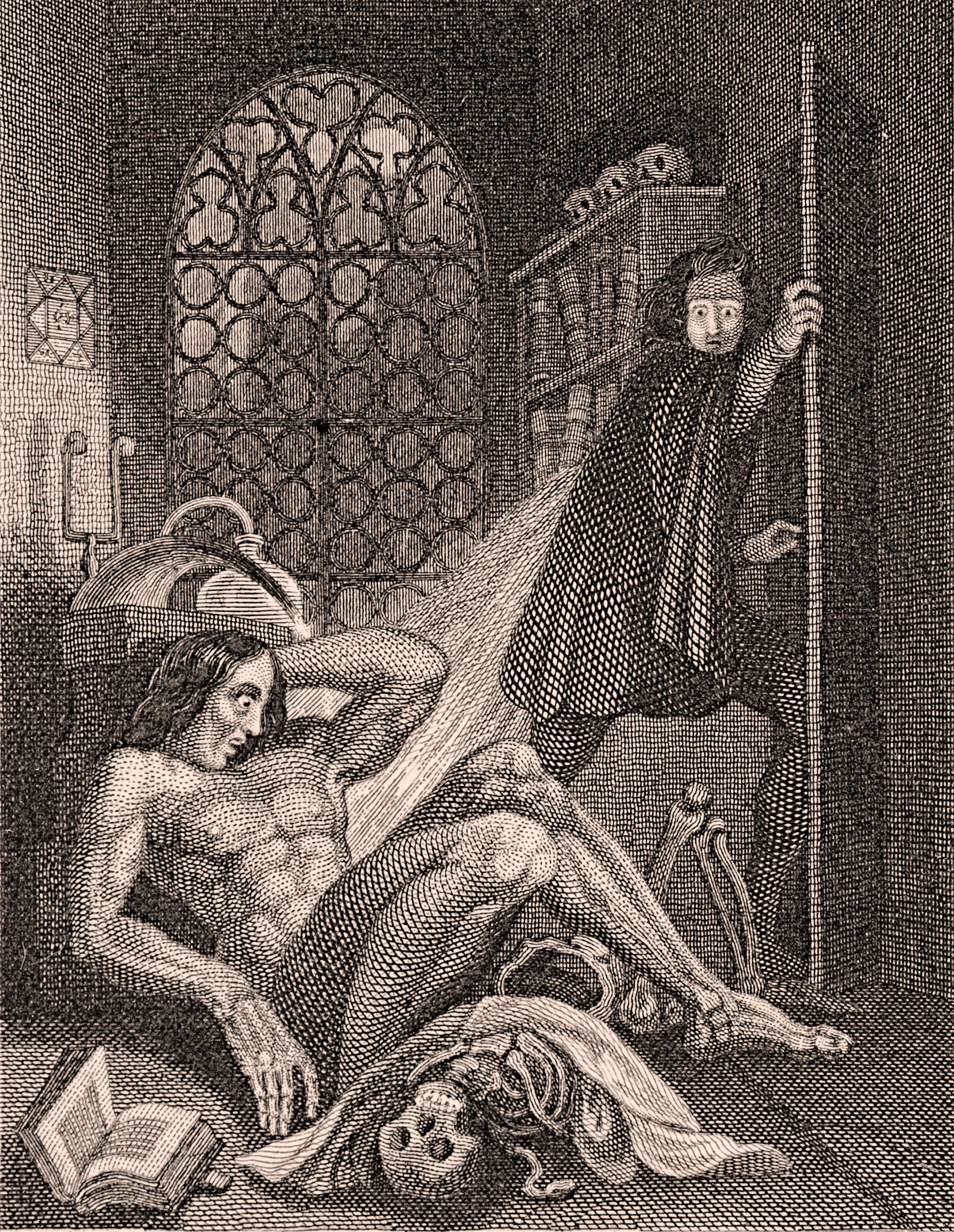They Did the Monster Mash
Original Illustration of Frankenstein's Monster, Theodore Von Holst, 1831 | PC: Wikimedia
Memento Artem
Every generation has different ideas that come to mind when they hear the word “monster.” Especially this time of year, “monster” makes people think of the spooks, creepy crawlies and ghouls.
Most of the time, classical literary monsters come to mind like Frankenstein’s creature or Count Dracula. Yet, both the modern and classical depictions differ quite a bit.
Frankenstein’s monster has been through multiple makeovers. The modern representation most people imagine is a stitched and stapled figure with a square head and bolts in its neck. This version of the monster stems from the classic 1930s film starring Boris Karloff who wore the infamous makeup created by Jack Pierce.
However, its original story can be traced back to the 19th century. Frankenstein’s monster first appeared in “Frankenstein,” which was a fictional novel written by Mary Shelley in 1818.
The original visual depiction of the monster was in 1831 in an illustration created by Theodor von Holst. Apparently this illustration represents the monster much closer to what Shelley had in mind when she wrote the book.
Count Dracula has had different iterations since the inception of the vampire in Bram Stoker’s novel, “Dracula.” The modern version of Dracula wears a tuxedo and a cape, is extremely pale and has fangs. This stems from the play, turned movie, version of the vampire from the 1920s and early 1930s. This is a far cry from the original description of Dracula in Stoker’s novel.
Stoker describes him as, “a tall, thin man, with a beaky nose and black moustache and pointed beard….His face was not a good face. It was hard, and cruel, and sensual, and big white teeth, that looked all the whiter because his lips were so red, were pointed like an animal’s.” However, the original paperback edition of the novel in 1901 featured a very different image. The figure is shown, almost reptilian like, scaling down a wall with a bat-like cape.
A year later, a new cover illustration was released that better fit the author’s original description. Here, Dracula appears dramatically with a beard, clad in all black and accompanied by a bat and wolf during a windy night.
It’s intriguing to see how these iconic monsters have evolved over time. Perhaps they transformed in order to become a spookier representation? Maybe it’s because humans are too weary to view each other as something scary. So, in turn, they create monsters that are more grotesque and terrifying.
Cameron Cizek is a senior studying computing.


